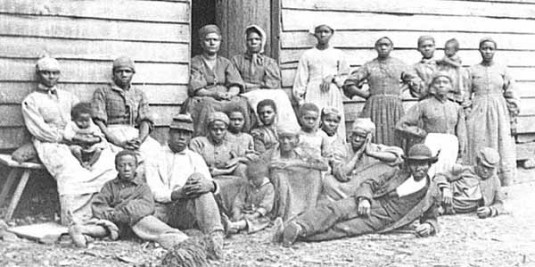William Nixon was the tavernkeeper in Locktown in 1861 when Benjamin Ellicott and wife Mary Ann Warford set up residence there. The story of the family’s move from Baltimore to Locktown can be read here: Benjamin Ellicott’s Diary.
Marfy Goodspeed
Posts by Marfy Goodspeed:
Benjamin Ellicott’s Diary
While processing the reams of archived material at the Hunterdon County Historical Society, archivist Donald Cornelius came upon a handwritten diary composed during the years of the Civil War. He was stunned and thrilled by what he found, a personal journal from a resident of Locktown written during those stressful years, 1861-1863. I am equally thrilled that he shared his find with me. Since the Civil War officially ended 150 years ago on April 9th, I would like to share with you the first pages of this fascinating document, written by Benjamin Harvey Ellicott.
Slavery in Hunterdon

In the most recent issue of the Hunterdon Historical Newsletter, Lois Crane Williamson wrote an article titled “The Last Slave in Franklin Township.” It shows that slaves were still living in Hunterdon County long after the Gradual Emancipation Act of 1804 was signed. The last advertisement for a runaway slave to appear in the Hunterdon Gazette was published on February 14, 1838:
Query Answered
The Van Dolah Farm
Recently I asked if anyone recognized this photo. It didn’t take long for readers to answer the question, as you can see from the comments below.
A Proprietary History
A new history of the New Jersey proprietors and their jurisdictions
Today the mail brought me the latest issue of the Genealogical Magazine of New Jersey, published by the Genealogical Society of New Jersey. This issue, vol. 89, #4, departed from the usual format by devoting the entire magazine to one article, in celebration of the 350th anniversary of the creation of New Jersey.
Lime and Trees and Other Things
First Trip to Delaware River Kilns an Experience for a Boy
Spoke Making a Lost Trade
by Egbert T. Bush, Stockton, N. J.
published in the Hunterdon Co. Democrat, April 21, 1932
 In recognition of the belated arrival of spring, I offer Mr. Bush’s tale of how farmers got lime for their fields in the mid 19th-century. And among those “Other Things,” Mr. Bush describes the business of spoke making.
In recognition of the belated arrival of spring, I offer Mr. Bush’s tale of how farmers got lime for their fields in the mid 19th-century. And among those “Other Things,” Mr. Bush describes the business of spoke making.
As our forests were cut off and the stumps rotted away, the land was found to be or soon to become more or less sour. The sorrels began to grow plentifully, especially the tall, reddish brown one that we called “horse sorrel.” That was later known as a sure indication that the land needed lime, tho in the earlier stages little was known about sour land or the indications, or even about lime as a sweetener. Such knowledge, like almost every other kind, grew gradually with experience and observation, until science took hold of such matters and showed us to be sometimes on the right track without knowing exactly why.
Query: Union Cemeteries
Some time ago, I received a query from Alice Groner, regarding the name Union, as applied to cemeteries. Here is what she wrote:
Why were so many cemeteries named Union Cemetery years before the Civil War? . . . I have continued my search as well and discovered that Union Twp. in Hunterdon County was named after Union Furnace which made, among other things, cannon balls for the Revolutionary War. And a lot of the Union Cemeteries in NJ were established before/long before the Civil War. The Union Cemetery, which kicked off the discussion with my friend, is located near Finesville (on the Warren County side of the Musconetcong River), and it is so old that few tombstones are readable. I’m, also, wondering if the usual rather small cemeteries of our early churches filled up and, therefore, folks decided to have a cemetery uniting those of all/most faiths.
“…so many questions…so little time.”
A Google search on the word Union in the Revolutionary War will get you some articles on the many flags that were flown during that time, one in particular (from Taunton, Massachusetts) with the words: “Liberty and Union.” So the word was on people’s minds when they thought about uniting the colonies. The goal of creating “a more perfect union” was used in the preamble to the Constitution.
Perhaps some of you can come up with a better answer for Alice. It’s an intriguing question.
The Van Dolah School
Of all the one-room schools in Delaware Township, none seems to have inspired more devoted attachment than the Van Dolah School. The number of graduates was large, and many of them were highly accomplished in later life. It was probably one of the best photographed schools in the county. I have included many of them here.
Asa Romine and Sarah Fulper
Postscript to “Asa Romine’s Beloved Farm“
Some time ago I got a copy of an article in the Democrat-Advertiser of 1902. Actually, copies of several articles, but I neglected to file them in any useful way. Today, I stumbled across this particular article and immediately regretted not having it at hand when writing about Asa and Sarah Romine. It is a celebration of their long married life, probably written by Jonathan M. Hoppock. Here it is:
Some Controversial Baptist Ministers
My original intention was to publish an article by Jonathan M. Hoppock on the history of the Baptist Church in Locktown. And that is what I will do here, but after reading his article, I discovered that some of the ministers he listed had troubled careers, and that, of course, makes them interesting. But first, here is Mr. Hoppock’s history of the Church.